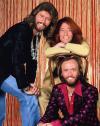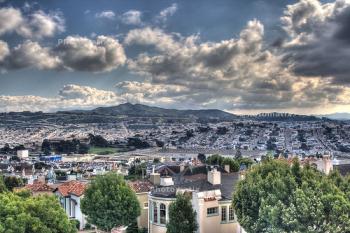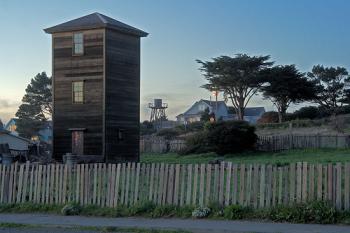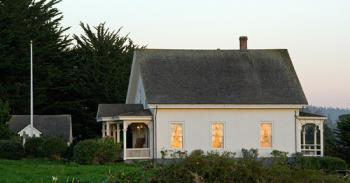 College campuses in the US are being asked to foot the bill to allow
law enforcement to eavesdrop on their students' online conversations.
College campuses in the US are being asked to foot the bill to allow
law enforcement to eavesdrop on their students' online conversations.
In 1994 the US passed CALEA, a law requiring that telephone companies architect their systems so it's easy for law enforcement to tap digital phone calls. In 2004 CALEA was expanded to apply to the Internet, in particular voice-over-IP calls and other aspects of Internet communciation. Then the FCC got in the act, saying in August 2004 that CALEA would apply to pretty much anyone providing Internet access. Which leads us to college campuses which, among other things, provide Internet access to their students. Now these campuses may not only have to help the government spy on their students and faculty, they may have to pay the bill! Just what you need on a non-profit budget. Not only is this extension of wiretap privileges a violation of citizen privacy, it's a wasteful expense. EDUCAUSE is defending the academic institutions, filing briefs with FCC saying the requirements are too onerous. The whole concept of CALEA is wrong-headed, but the expense argument may actually work. Thanks to
the EFF; without them I
wouldn't understand CALEA
 Parking at a meter in SF costs at least $1.50/hour.
You need eight quarters in your
pocket to stop for lunch. Who has that kind of change?
Parking at a meter in SF costs at least $1.50/hour.
You need eight quarters in your
pocket to stop for lunch. Who has that kind of change?
Awhile back SF upgraded all its meters to take stored value smart cards. Now, two years later, you can finally buy the cards! The places to buy them were a well kept secret, but recently it was disclosed you can buy them at Muni sales counters. Why not online? beats me. The implementation seems pretty good; you put the card in a meter, the meter tells you your balance, and then the longer you keep the card in the meter the more (virtual) quarters you drop. Simple enough. I note my non-refundable card is set to expire at the end of this year. It's all a "trial program", you see. I just wanna park!
If you're at all interested in computer security and the dark side of online
advertising, read this
fantastic investigative piece by Brian Krebs for the Washington
Post. He tracks down one example of the adware business,
along the way describing the roles of the hacker with a botnet,
the sleazy advertising company that supplies the dollars, and
the horrible software provider that makes the uninstallable
malware that shoves ads in front of people's faces.
What I find astounding is that some aspects of this business are so lucrative that American companies are trying to make them legitimate. It's shameful that a company with such an awful history as an adware provider was able to raise $40 million in venture capital. You know your aunt's computer, the one with the porno ad software you can't remove? The people who knowingly finance and install that software belong in jail. via Paul
Kedrosky
My blog
post about HDR photos and Photoshop has been unexpectedly popular.
I wish I'd done better explaining HDR, but
I'm still working on understanding it myself.
In addition to Photoshop there are a lot of other HDR tools out there. Photomatix is one really easy to use standalone tool with a free trial for Mac and Windows. It seems a bit more fast-and-loose than Photoshop's nerdy careful approach, well suited for exploration. I particularly like the "Exposure Blending" tool where you can throw a bunch of photos into it and quickly come up with a single tone-mapped JPG. If you want to play with HDR and Photoshop seems too difficult, check out Photomatix. I've updated my HDR Flickr set to include 3 different HDR processes on the same set of pictures: Photoshop, Photomatix automatic, and Photomatix tone mapping. Amazing what variation there is.
I've been playing with my DSLR for months now without
understanding what shutter speeds and apertures really do. After doing
a bunch of reading on the
science of exposure and the intuition of
exposure, I finally get it. At least I think I do and now I'm
going to embarass myself by revealing my ignorance.
Please tell
me if I get something really wrong.
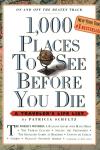 Ken and I love to travel but sometimes we have trouble thinking of
interesting new places to go. The book 1000
Places to See Before You Die is a great source of ideas. Just
like it sounds: a list of places worth seeing in the world.
Parks, gastronomy, archeological sites, etc.
Ken and I love to travel but sometimes we have trouble thinking of
interesting new places to go. The book 1000
Places to See Before You Die is a great source of ideas. Just
like it sounds: a list of places worth seeing in the world.
Parks, gastronomy, archeological sites, etc.
For example, California's entry is twelve pages on Death Valley, Yosemite, the Monterey Peninsula, the Pacific Coast Highway, the Golden Door spa, Hotel del Coronado, the Getty Museum, Hollywood, the SF Cable Cars, Chez Panisse, and Wine Country. I could quibble with a couple of these suggestions, but if you've never been to California that's a pretty good place to start. And the book has suggestions like this for the whole world. Tanzania? Bhutan? France? All here. It sounds a bit cheesy, but the book is well executed and full of interesting ideas. And the short format makes it ideal for occasional browsing. Fun book.  Ken and I have a trip planned
to Australia. Many thanks to everyone who wrote in with
suggestions! Australia is a very popular place.
If you think you want to visit, read
In a Sunburned Country. It's great light
travel reading, with lots of insight, and will definitely make you
eager to visit.
Ken and I have a trip planned
to Australia. Many thanks to everyone who wrote in with
suggestions! Australia is a very popular place.
If you think you want to visit, read
In a Sunburned Country. It's great light
travel reading, with lots of insight, and will definitely make you
eager to visit.
We're the type of travellers who have to have every night's hotel planned before we leave. Unfortunate for spontaneity but good for avoiding stress. Here's the plan:
Photographs in extreme lighting are a compromise. Either the
highlights are overexposed or the shadows are underexposed. But with
HDR techniques you can take multiple photos at different exposures,
then combine them into a normal image with fine local control over exposure.
It's a bit like the Shadows/Highlights adjustment, only
with real data instead of fakery.
Photoshop CS2 makes HDR easy for normal people. Some intro material on HDR can be found in this tutorial and this article. The HDR Flickr Group is fun, too. I made a small HDR experiment while in Mendocino. The result isn't great; boring composition, the fence looks unnatural, and I didn't have enough range of source images. But it was a good exercise. Here's how to do HDR in Photoshop CS2:
Two feet of snow in the Northeast?
"Wind
gusting to 40 mph blew the snow sideways"? Ha ha ha ha. It's been
70 degrees and clear in San Francisco for the last week. Ken and I
took advantage of the weather to head up to Mendocino for a couple of
days.
Mendocino is a hippy/art town on
the coast about three and a half hours north of SF. It's a mellow town
with lots of good
restaurants. Alas, half the town is
closed until mid-February, but we had an excellent stay and
dinner at the Mendicino
Hotel.
We walked around the coast and mostly just relaxed, took photos. On the way back we drove through the Alexander Valley and stopped in Navarro Vineyards for wine and Healdsburg for lunch. California is a good place to be.
Adobe
Camera Raw is a good RAW image convertor that's part of Photoshop.
I spent a lot of time trying to figure out how to batch
convert a whole directory of photos, with confusing "actions" and
"droplets". Then I learned it's a lot simpler than that.
Bonus tip: Microsoft has a RAW Image Thumbnailer PowerToy that lets the file browser make thumbnails of your RAW images, just like JPGs. Works great. 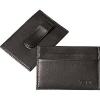 43 Folders cracks me up. Not only does this tips-for-living blog have
an article
about reducing stuff to carry, it has multiple wiki
lists
and a meaningful pull quote from
an Washington Post article
about how the crap we carry reveals the existential crisis of modern
living.
43 Folders cracks me up. Not only does this tips-for-living blog have
an article
about reducing stuff to carry, it has multiple wiki
lists
and a meaningful pull quote from
an Washington Post article
about how the crap we carry reveals the existential crisis of modern
living.
Reading their lists reminded me of how happy I became when I got rid of my inch-thick wallet and started carrying a tiny card case instead. Mine carries cash, a driver's license, two credit cards, an ATM card, and a piece of paper with essential info like health insurance policy codes and emergency phone numbers. I get a little sense of peace everytime I remember how little I have in my pockets. The Tumi product is great quality, too.  Qoop is a clever service that
prints books of your photos. It has amazing integration with Flickr.
Go to Qoop, look at your Flickr photos and choose which to print,
enter a credit card and a few days later a nicely bound
book of pictures comes to your house. Couldn't be simpler.
Qoop is a clever service that
prints books of your photos. It has amazing integration with Flickr.
Go to Qoop, look at your Flickr photos and choose which to print,
enter a credit card and a few days later a nicely bound
book of pictures comes to your house. Couldn't be simpler.
I ordered a book of 168 of my photos from Switzerland. The 8x10" book format is great; easy to flip through and look at pictures, easy to put on a shelf to preserve. Qoop also offers posters and calendars and soon, postcards. The print quality is a compromise. The perfect binding and paper quality are terrific. But it's not a photo printer, it's more like a high quality color laser printer. The color matching isn't great and sometimes the ink is a bit uneven. But the books are relatively inexpensive (my order came to 40 cents a photo) and a heck of a lot nicer than printing a bunch of 5x7" and pasting them in an album. Their customer service is very friendly and responsive, too. I'll definitely be ordering more books. I'm amazed at how convenient the process was. I assume the core enabler here is the Flickr API which allows Qoop to get at my photos. More web services like this, please! For many financial transactions a signature is sufficient. For some, you have to have the signature notarized. The notary's job is to verify your ID, maybe take a thumbprint, and take $10 from you. Somehow this adds security. I learned today there's a different kind of signature authentication, the Medallion Signature Guarantee. It's commonly used to authorize stock transactions. Banks charge $10; crazily enough they're apparently assuming liability for your authentication. 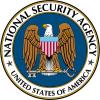 Today the Washington
Post gives us the breakdown on the results of Bush's illegal
wiretap program. 5000 Americans
were spied upon; 10 of them were sufficiently suspicious to merit
further investigation. One in five hundred. But according to the
article, the conventional legal standard is that one in two wiretaps
need to bear fruit to meet the requirement of probable cause.
Now it's
clear why the Bush Administration knowingly violated the law; they couldn't meet
its requirements. It's good to be the king.
Today the Washington
Post gives us the breakdown on the results of Bush's illegal
wiretap program. 5000 Americans
were spied upon; 10 of them were sufficiently suspicious to merit
further investigation. One in five hundred. But according to the
article, the conventional legal standard is that one in two wiretaps
need to bear fruit to meet the requirement of probable cause.
Now it's
clear why the Bush Administration knowingly violated the law; they couldn't meet
its requirements. It's good to be the king.
I know we're all suffering outrage fatigue here, but this extension of executive power is a serious threat to orderly US government. It has to be stopped. I just got a letter from the ACLU saying they're raising $1,000,000 to work a ninety day ad campaign on the wiretap issue and the Patriot Act. The ACLU is one of the few effective organizations acting here, but they need money. 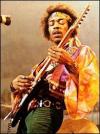 It goes without saying, but Jimi Hendrix rocks. Earlier today I was
listening to King
Crimson and was sadly thinking "was all 60s music this awful and
pretentious?". Then I queued up Are You
Experienced? and on came the sublime "May This Be Love" (aka
Waterfall) and my faith was restored.
Blues
influenced rock? Good. Progressive rock? Bad.
Next up: Little Wing.
It goes without saying, but Jimi Hendrix rocks. Earlier today I was
listening to King
Crimson and was sadly thinking "was all 60s music this awful and
pretentious?". Then I queued up Are You
Experienced? and on came the sublime "May This Be Love" (aka
Waterfall) and my faith was restored.
Blues
influenced rock? Good. Progressive rock? Bad.
Next up: Little Wing.
Reading 1UP's feature on game ripoffs
reminds me of one of the most amusing and bizarre game ripoffs, Super
Noah's Ark 3D. It's an unlicensed SNES game from Christian games
developer Wisdom
Tree, a Wolfenstein 3D
knockoff. Instead of a soldier shooting evil Nazis with machine guns,
you're Noah lobbing sleep-inducing berries at unruly goats on the Ark.
Yes, really.
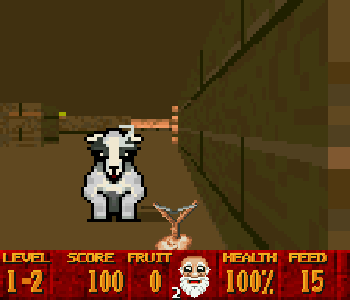 The rumour is that Super Noah's Ark 3D came about because id leaked them the code as revenge for carebear changes Nintendo demanded of the SNES port of Wolf3D. The story's probably too good to be true, but none the less we can still enjoy spectacle of a Christian games company making an unauthorized SNES game that's a knockoff of an ultraviolent and hugely innovative game. Truly the great ripoff.
I've got nothing new to contribute, but Paul Graham's essay on
how to fund a
startup is so great I wanted to call it out. I spent months
trying to figure this stuff out when I started my company. Very good
introductory material on seed funding, VCs, capitalization tables,
etc. Some good advice in there, too.
Venture funding works like gears. A typical startup goes through several rounds of funding, and at each round you want to take just enough money to reach the speed where you can shift into the next gear.
I like my photos taken with the cheap
Canon 50/1.8 prime lens (like
these)
more than the ones taken with my
Canon 24-85 zoom lens
(like these).
Prime lenses really are sharper and have clearer
colours than zoom lenses. But zooms are convenient, particularly for
walking around.
The usual suggestion for an excellent all-around zoom is the Canon 24-70 f2.8L. But it's very expensive and at 950 grams, too heavy. An alternative is the Tamron 28-75 f2.8. It's got the same basic specs as the Canon, but a third the price and half the weight. Folks seem to love this lens. 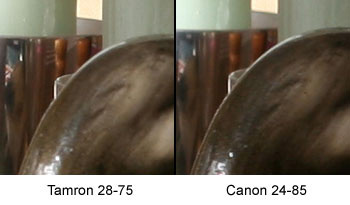 This comparison is a bit weak; it's hard to really measure lenses. But I've got an example that convinces me this lens will work out. See the Flickr set for all of the photos. |
||

